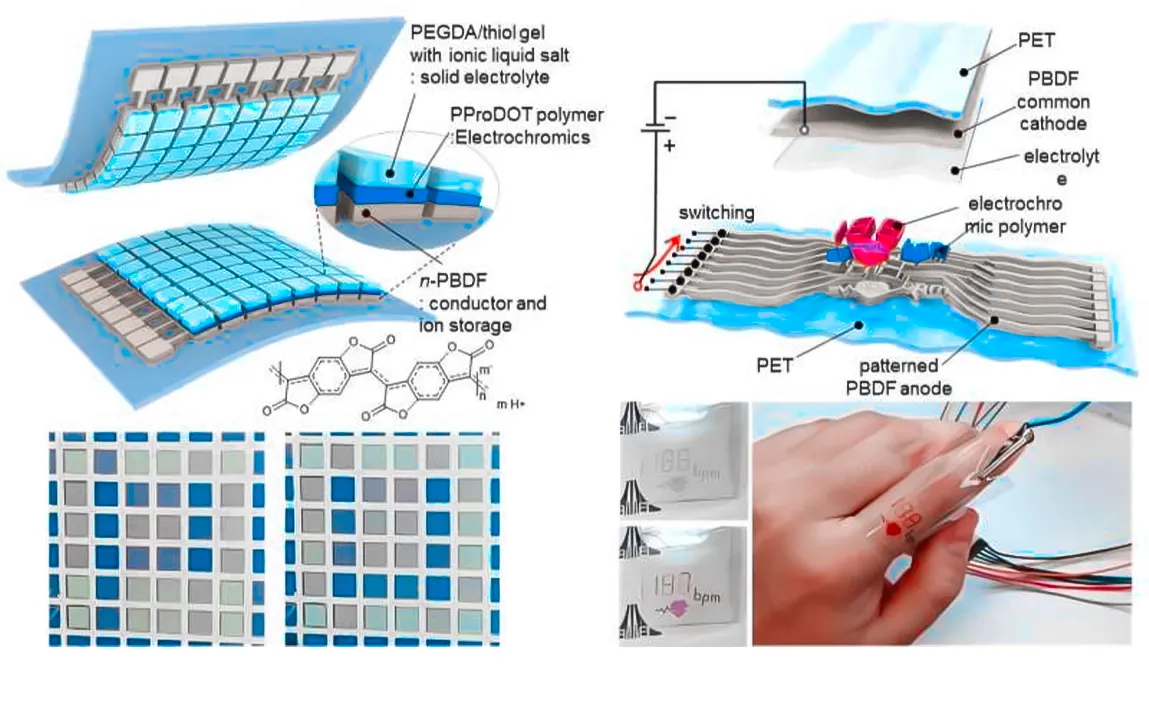In display technology, the development of new materials is being continuously pursued. One of the most important breakthroughs consists of a newly developed n-doped transparent conductor that exhibits enormous promise for applications in all-polymer ECDs. This new material, a capacitive conductor called n-PBDF, is an advance not only in electrochemical performance but also in energy efficiency, flexibility, and sustainability. It opens the way to a new generation of electronic displays that could be used in everything from consumer electronics to wearable devices.
The Challenge with Traditional Conductors
At the heart of the innovation is a drive toward a replacement of conventional indium tin oxide-ITO-a perennially used standard for transparent conductors in electronic displays. While ITO has seen extensive application in many displays due to its very good conductivity and transparency, a number of disadvantages make its use unappealing: it is brittle, expensive, and depends on indium, a rare and expensive metal. Apart from this, the production process of ITO is very energy-intensive and hence not too ideal for up-and-coming trends in sustainable and flexible electronics. Therefore, its alternative has been in demand by researchers to get over these lacunas.
The development of n-PBDF marks a significant step in this direction. N-doped poly(3,7-dihydrobenzo[1,2-b:4,5-b’]difuran-2,6-dione) (n-PBDF) is an organic conductor material with excellent conductivity at transparency. Its chemical structure provides it with dual functionality: a conductor and an ionstorage material, especially the most valued in electrochromic applications.
A Revolutionary Dual-Function Material
The outstanding role of n-PBDF is that it can act as a transparent conductor and an ion-storage layer simultaneously. Traditional ECDs usually require multilayer construction for these purposes and hence are more complex and energy-consuming. On the other hand, this double functionality of n-PBDF simplifies the design, reduces costs, and increases the general energy efficiency of such a device.
Tests have shown that the films of n-PBDF possess highly stable electrochemical properties. These films are purely capacitive and show high insertion-extraction efficiency in the potential window between -0.5 to +0.5 V. The material capacity of storing ions is the main requirement of electrochromic display, where color or transparency will change according to ion reversible movement. Films also show negligible color change; hence optical transparency of these films remains unchanged without affecting performance.
Performance and Durability of Electrochromic Displays
The electrochromic devices fabricated from the n-PBDF films outperformed expectations: excellent optical contrast, color stability, and durability. These devices give the highest attainable optical contrasts, a fair insight into the quality of displays, and maintain their performance even after 1,000 switching cycles. This makes them highly suitable for applications where displays need to be switched on and off frequently without degradation in performance.
Besides this, electrochromic devices based on n-PBDF show very low power consumption. Having an operation power of less than 0.7 μW per cm², such a device will provide one of the lowest power-consuming electrochromic displays. This characteristic is one of the key points in the race toward low-energy displays, in particular for applications involving flexible and wearable electronics, for which power supply is often a bottleneck issue.
Moreover, because these displays retain images for periods of time-for upwards of 1,000 seconds without any additional power input-applications involving less frequency in changeable content further decrease energy consumption.
Flexibility and Scalability for Future Applications
Another impressive feature of n-PBDF is the degree of flexibility. The material has successfully been used in devices fabricated on flexible substrates, for instance, polyethylene terephthalate plastic. This displays excellent mechanical durability with flexibility, which still maintains their color-switching abilities even under bending stresses as tight as 0.5 cm in radius.
This flexibility could open up perspectives for applications such as wearable electronics and devices that require deformable or bendable displays, such as smart clothing or flexible e-paper. The possibility of fabricating high-resolution pixelated displays is another important feature of n-PBDF, and this material is compatible with photolithographic micropatterning techniques. This is how precise segmentation and reduction of image crosstalk-a significant challenge in the development of multi-pixel displays-can be achieved.
Implications for Sustainable and Green Technology
This n-PBDF material gives better performance to electrochromic displays, but also goes with the growing trends in sustainability. This development uses organic materials that are nontoxic, energy-efficient, and can provide a path for electronic display productions to reduce the environmental impact at the production level. Besides that, n-PBDF is scalable in production, which will certainly make all-polymer-based electrochromic displays cheaper and accelerate the usage in many sectors.
Such development can have significant implications for consumer electronics, smart home appliances, medical care, and automotive applications, among others. As a particular example, flexible, low-power electrochromic displays can revolutionize smart window technologies wherein the windows, in response to incident light or heat, will change their transparency to promote better energy efficiency in buildings.
New Horizons in Display Technologies
While research continues to optimize n-PBDF’s performance, the range of applications is likely to go well beyond electrochromic displays. In fact, n-PBDF-based materials may find a place in many other electrochemically-driven technologies, such as e-paper and augmented reality displays, which promises even more advanced, interactive, and eco-friendly display systems.
This n-doped transparent conductor testifies to the continuing evolution in display technology. The high-performance, energy-efficient, and environmentally friendly all-polymer electrochromic displays based on n-PBDF will definitely play an important role in shaping the future of sustainable electronics.
In the end, the introduction of n-PBDF as a dual-function material for electrochromic displays is a quantum leap in display technology. This development not only improves the performance of such devices but also advances the transition toward more sustainable, energy-efficient, and flexible electronics, opening up new possibilities for both consumer and industrial applications.



